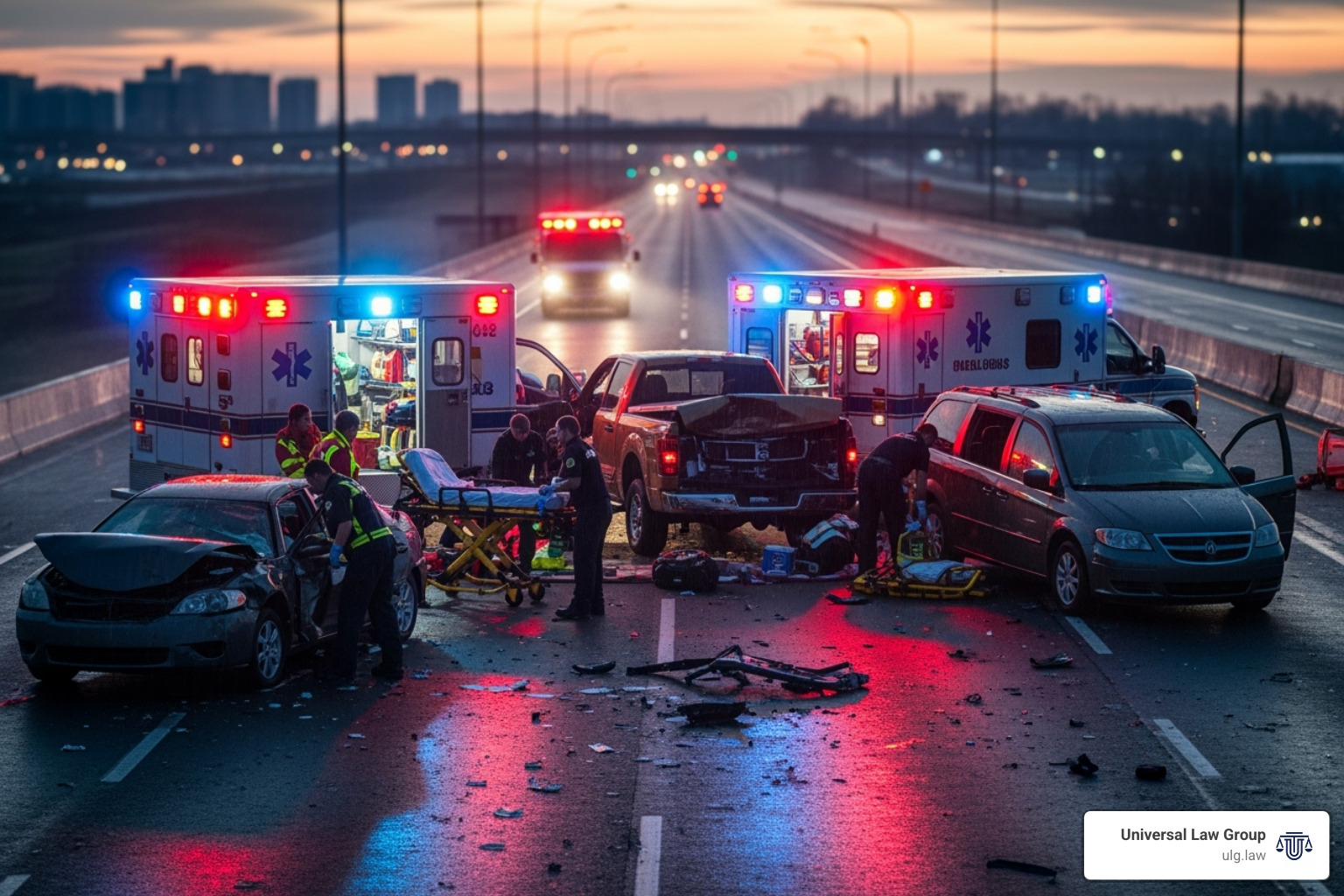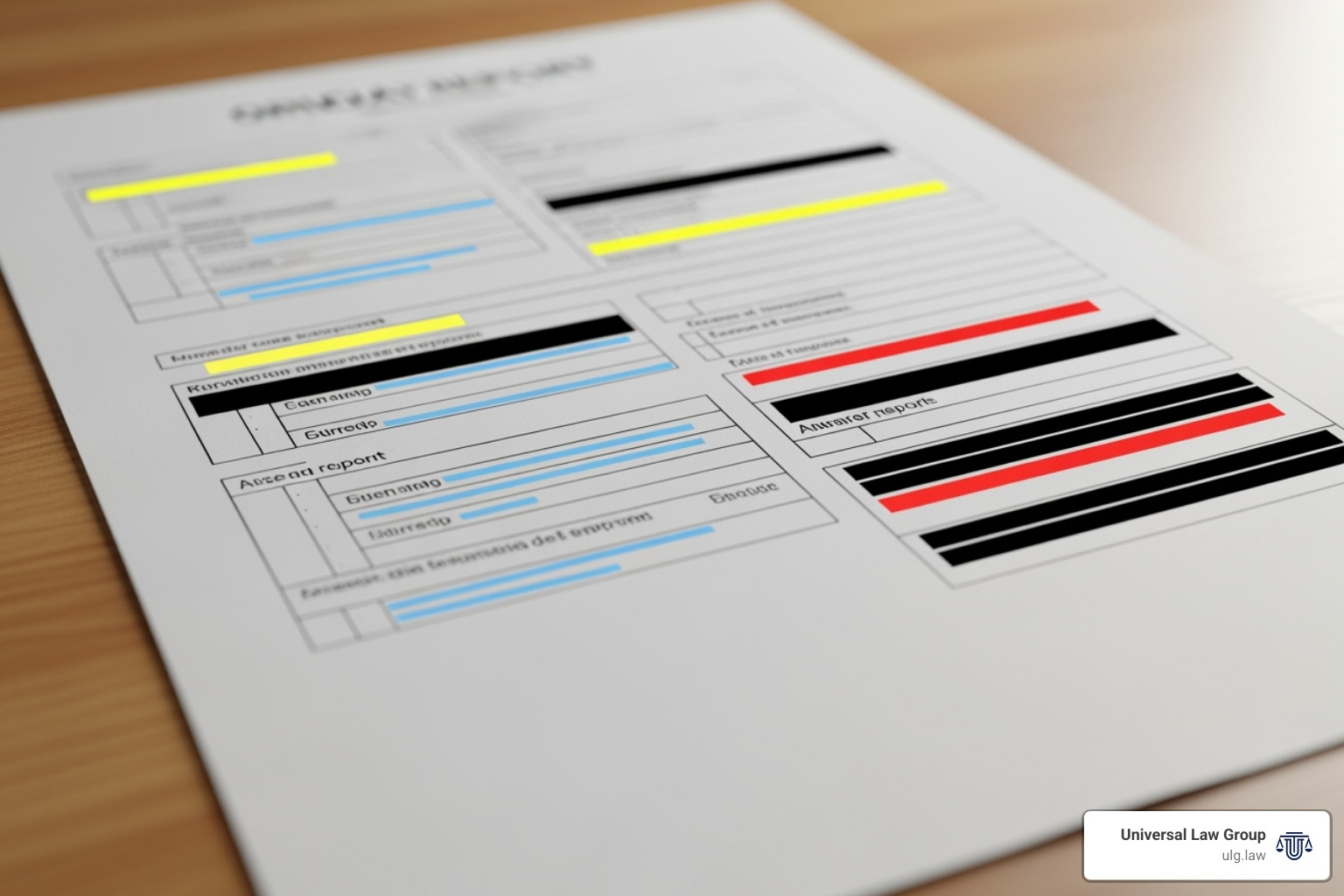When the Unthinkable Happens: Fatal Car Accidents in Texas
Understanding the Devastating Impact of Fatal Traffic Crashes in Texas

Fatal car accident Texas statistics reveal a sobering reality: every 2 hours and 2 minutes, someone loses their life on Texas roadways. If you’re seeking information about a fatal car accident in Texas, here’s what you need to know immediately:
Key Facts About Fatal Car Accidents in Texas:
- 4,291 fatalities occurred on Texas roads in 2023
- 26.26% of fatal crashes involved alcohol-impaired drivers
- 48.91% of fatalities involved people who were not wearing seat belts
- You have 2 years from the date of death to file a wrongful death car accident claim
- Crash reports cost $6-$8 and are available through TxDOT within 14 days
- Rural areas account for over half (51.92%) of all traffic fatalities in Texas
When a loved one is killed in a car accident, families face unimaginable grief alongside urgent questions about what happened and who was responsible. The aftermath brings not only emotional devastation but also complex legal procedures and financial concerns that can feel overwhelming.
This guide explains the reality of fatal car accidents in Texas—from statistics and common causes to obtaining crash reports and understanding your legal options. We’ll walk you through the immediate steps to take, the legal pathways available, and how to seek both justice and compensation for your family’s tragic loss.
I’m Brian Nguyen, co-founder and Managing Partner of Universal Law Group. As a former Assistant District Attorney who prosecuted cases involving fatal car accidents, I’ve seen both the criminal and civil sides of these tragic incidents. I’m committed to helping families steer this difficult journey with clarity and compassion.

The Sobering Reality: Fatal Car Accident Statistics in Texas
Behind the statistics on fatal car accident Texas incidents are families forever changed by a single moment on the road. In 2023, Texas roadways claimed 4,291 lives. While this was a 2.70% decrease from 2022, the fatality rate of 1.42 deaths per hundred million vehicle miles traveled remains tragically high. The reality is stark: every 2 hours and 2 minutes, someone dies on a Texas road.

As former prosecutors and advocates for accident victims, we’ve seen the devastation behind these numbers. Understanding where, when, and how these tragedies occur helps us recognize patterns and hold negligent parties accountable.
High-Risk Areas and Times
- Rural Roads: More than half of all traffic fatalities (51.92%, or 2,228 deaths) occurred in rural areas. These roads often have higher speed limits, fewer safety features like streetlights, and longer emergency response times, making crashes more severe.
- Deadly Months & Days: The summer months see a tragic peak, with June and August tied as the deadliest months of 2023 (391 fatalities each). The single deadliest day was Saturday, September 9th, with 25 deaths. In fact, there wasn’t a single day in 2023 without a traffic fatality in Texas.
Common Crash Types Leading to Fatalities
- Single-Vehicle, Run-Off-the-Road Crashes: These incidents claimed 1,366 lives (31.83% of all traffic deaths) and often involve a single driver losing control due to distraction, speed, or impairment and striking a fixed object.
- Intersection-Related Crashes: Resulting in 1,121 deaths, these crashes often happen when drivers run red lights, fail to yield, or misjudge traffic, leading to dangerous side-impact (“T-bone”) collisions.
- Head-On Collisions: Among the most violent crash types, head-on collisions killed 635 people. The combined forces are catastrophic, and they typically occur when a driver crosses the center line.
Vulnerable Road Users
Those without the protection of a vehicle face disproportionate risks.
- Pedestrians: 810 pedestrians were killed in 2023. These tragedies highlight the dangers of inadequate pedestrian infrastructure and driver inattention.
- Pedalcyclists: Fatalities for cyclists increased by a troubling 15.22%, with 106 killed. Many of these deaths occur when drivers fail to see or provide adequate space for cyclists.
- Motorcyclists: 600 motorcyclists died in 2023. Tragically, 40% of those killed were not wearing a helmet, a simple device that dramatically improves survival rates.
Beyond fatalities, 18,765 people sustained serious, life-altering injuries in 2023. For a complete breakdown, you can review the official 2023 crash statistics from TxDOT.
Uncovering the Causes: Why Fatal Collisions Occur on Texas Roads
Most fatal car accident Texas incidents are not random “accidents” but preventable events stemming from specific causes. Understanding these causes is the first step toward accountability.
The Role of Driver Behavior in a Fatal Car Accident in Texas
Driver behavior is the single most significant factor in fatal crashes. Dangerous choices put everyone on the road at risk.
- Intoxication: This remains the deadliest driver behavior. In 2023, 1,127 people died in crashes involving a driver under the influence of alcohol, accounting for 26.26% of all traffic fatalities. These crashes spike between 2:00 a.m. and 2:59 a.m., particularly on Sundays.
- Speeding: Exceeding a safe speed reduces reaction time and dramatically increases impact forces. The physics are unforgiving: what might be a minor collision at a low speed becomes fatal at a high speed.
- Distracted Driving: Despite awareness campaigns, distracted driving claimed 403 lives in 2023. Texting, using a phone, or any other activity that takes your attention off the road can have catastrophic consequences.
- Failure to Use Restraints: Of all people killed in crashes where restraint use was known, a shocking 48.91% were not wearing seat belts. For motorcyclists, 40% of those killed were not wearing a helmet. These are the most effective safety devices available.
External Factors and Conditions
While driver error is the primary cause, external conditions often amplify the danger.
Texas presents unique challenges that can turn a small mistake into a tragedy. Sudden rainstorms, dense fog, and ice can catch drivers off guard, demanding slower speeds and heightened awareness. The physical condition of roads—potholes, faded lane markings, or confusing construction zones—also contributes to crashes. Nighttime driving adds further risks, including reduced visibility, glare from headlights, and driver fatigue.
The interplay between driver behavior and these external conditions creates a perfect storm for tragedy. When we investigate a fatal car accident Texas case, we examine every factor to establish negligence and hold the responsible parties accountable. For more data, see the Annual Texas motor vehicle crash statistics.
The First Crucial Step: Obtaining the Texas Crash Report
In the aftermath of a fatal car accident Texas incident, one of the first and most important actions you can take is to obtain the official crash report. This document is the foundation for insurance claims and any potential legal action.
Legal Requirements for Reporting an Accident
Under Texas Transportation Code §550.062, a law enforcement officer must file a CR-3 Peace Officer’s Crash Report for any accident involving injury, death, or property damage over $1,000. The officer has 10 days from the crash date to submit this report to the Texas Department of Transportation (TxDOT).
How to Get Your Official Report
TxDOT has streamlined the process for obtaining reports online. To get your report, follow these steps:
- Gather Information: You will need the name of a person involved in the crash, the date of the crash, and the county where it occurred. Having the TxDOT Crash ID from the investigating officer is the fastest way to find it.
- Visit the Online Portal: Go to the Crash Report Online Purchase System, which is available 24/7.
- Purchase and Download: Enter the required information to locate the report. A regular copy costs $6, and a certified copy (often needed for legal purposes) is $8. After payment, you can download the report immediately.
Reports are typically available online within 14 days of the crash. TxDOT maintains fatal accident reports permanently.
Understanding the Contents of the CR-3 Report
When you receive the CR-3 report, it can seem dense and technical, but it contains the most critical evidence for your case.

Key information in the report includes:
- Crash Basics: The exact date, time, and location of the accident.
- Parties Involved: Names, contact details, and insurance information for all drivers, passengers, and pedestrians.
- Officer’s Narrative and Diagram: The officer’s written description of the events and a sketch of the crash scene, showing vehicle positions and points of impact.
- Contributing Factors: Codes and checkboxes indicating the officer’s opinion on causes like speeding, distraction, or failure to yield.
- Fatality and Injury Details: Information on injuries, fatalities, seat belt use, and any suspected alcohol or drug involvement.
This report is the primary document used by insurance adjusters to determine fault and by attorneys to build a legal case. It’s vital to review it carefully for any errors. At Universal Law Group, we know how to analyze these reports to build the strongest possible case for our clients.
Legal Pathways After a Fatal Car Accident in Texas
When a loved one dies in a fatal car accident Texas, you are suddenly thrust into a complex legal world. The path forward involves two distinct tracks—criminal and civil—and understanding both is essential for seeking justice.
Criminal vs. Civil Cases
These two types of cases serve different purposes and run on parallel tracks.
- Criminal Cases: Brought by the State of Texas (via the District Attorney) to punish a driver for dangerous conduct. Charges like Intoxication Manslaughter or Criminally Negligent Homicide can lead to prison time and fines. The goal is public safety, not compensating your family, and the standard of proof is “beyond a reasonable doubt.”
- Civil Claims: This is your family’s opportunity to seek financial compensation directly from the negligent party. A wrongful death lawsuit holds the at-fault driver financially responsible for your losses. The standard of proof is lower—”preponderance of the evidence,” meaning it was more likely than not that the defendant’s negligence caused the death.
A criminal conviction can strengthen a civil case, but you can win a civil claim even without criminal charges.
Filing a Wrongful Death Claim in Texas
Texas law specifies who can seek justice for the loss of a loved one.
- Who Can File: The surviving spouse, children, and parents of the deceased are eligible to file a wrongful death lawsuit.
- The Deadline: You have two years from the date of death to file a lawsuit. This is a strict statute of limitations. If you miss this deadline, you will almost certainly lose your right to seek compensation forever.
- Types of Damages: A successful claim can recover compensation for lost earning capacity, loss of companionship and emotional support, mental anguish, and medical and funeral expenses. A separate survival action can also recover damages for the pain and suffering your loved one endured before their death.
The Importance of a Thorough Investigation
The police crash report is only the beginning. A successful fatal car accident Texas claim requires a deeper investigation.
Police officers at a crash scene work under immense pressure and may miss crucial details. Our firm goes beyond the CR-3 report. We hire accident reconstruction experts to scientifically analyze the crash, re-interview witnesses, and obtain critical evidence like:
- Cell phone records to prove distracted driving.
- Vehicle data recorders (“black boxes”) that show speed, braking, and steering data.
- Toxicology reports to confirm impairment.
- Surveillance footage from nearby cameras.
We build an ironclad case by proving the four elements of negligence: that the other driver owed a duty to drive safely, breached that duty, that this breach caused the fatal accident, and that your family suffered damages as a result.
Frequently Asked Questions about Fatal Texas Car Accidents
After a fatal car accident Texas, families are often overwhelmed with questions. Here are clear, honest answers to some of the most common concerns we hear.
What should I do if I believe the police report is inaccurate?
If you find an error in the crash report, the approach depends on the type of mistake. Factual errors, like a misspelled name or incorrect license plate number, can often be corrected by contacting the reporting officer with proof (e.g., your driver’s license or vehicle registration). The officer can then file an amendment.
Disputed opinions, such as the officer’s conclusion about who was at fault, are much harder to change. However, you can submit a supplemental statement to the police department with your version of events and any supporting evidence. This statement becomes part of the official record. An experienced attorney can be invaluable in challenging inaccuracies and ensuring the full story is considered by insurance companies and courts.
How long do I have to file a wrongful death lawsuit in Texas?
You have two years from the date of your loved one’s death to file a wrongful death lawsuit. This deadline, known as the statute of limitations, is extremely strict. If you miss it, Texas courts will almost certainly bar you from ever seeking compensation, regardless of how clear the other driver’s fault was.
While two years may seem like a long time, building a strong case takes time. Evidence can disappear, and witnesses’ memories can fade. It is critical to contact an attorney as soon as possible to ensure all deadlines are met and your right to justice is protected.
Can I still recover damages if my loved one was partially at fault for the accident?
Yes, in many cases you can. Texas follows a proportionate responsibility rule, also known as the 51% bar rule. This means you can recover damages as long as your loved one was found to be 50% or less at fault for the accident.
However, your compensation will be reduced by your loved one’s percentage of fault. For example, if total damages are $1 million and your loved one was found to be 20% at fault, you could recover $800,000. If your loved one is found to be 51% or more at fault, you are barred from recovering any damages at all.
Because the difference between 50% and 51% fault is the difference between receiving compensation and receiving nothing, insurance companies will fight to shift blame. Our job is to conduct a thorough investigation to prove the other driver’s negligence and protect your family from unfair blame.
Moving Forward: Finding Support and Justice
The journey after a fatal car accident Texas is one no family should walk alone. We’ve covered the harsh realities: 4,291 lives lost in 2023, with preventable causes like drunk driving and distraction behind many tragedies. We’ve also outlined the crucial first steps, from obtaining the CR-3 crash report to understanding the non-negotiable two-year deadline to file a wrongful death lawsuit.
No amount of money can replace your loved one, but a wrongful death claim serves a vital purpose. It holds negligent parties accountable, can help prevent future tragedies, and provides the financial stability your family needs to cover lost income, medical bills, and funeral costs.
We also recognize that legal action is just one part of healing. Seeking emotional support through grief counseling, support groups, or your community is an essential part of this journey. Taking care of your well-being is paramount.
When you’re ready to explore your legal options, Universal Law Group is here to help. My background as a former Assistant District Attorney gives our team unique insight into how these cases are handled from both a criminal and civil perspective. We use that knowledge to aggressively advocate for families, providing personalized and responsive service to maximize the compensation you deserve.
Our attorneys offer free consultations because every family deserves to understand their rights without financial pressure. We will listen to your story, answer your questions, and provide clear guidance.

If your family has been impacted by a fatal car accident Texas, please reach out. You don’t have to face the legal system alone. Let us handle the complexities while you focus on what matters most—supporting each other and beginning to heal.
Contact us for help with your car accident case and let’s discuss how we can help you find both justice and the financial security your family needs to move forward.




